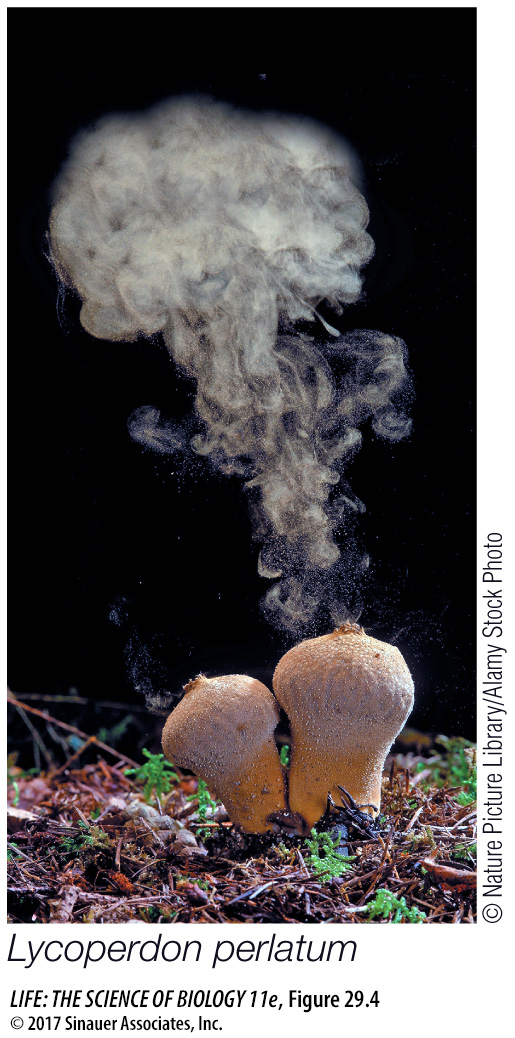Saprobic fungi are critical to the planetary carbon cycle
Saprobic fungi, along with bacteria, are the major decomposers on Earth, contributing to the decay of nonliving organic matter and thus to recycling of the elements used by living things. In forests, for example, the mycelia of fungi secrete extracellular enzymes that degrade plant materials into simpler compounds that are than absorbed. Fungi are the principal decomposers of cellulose and lignin, the main components of plant cell walls (most bacteria cannot break down these materials). Other fungi produce enzymes that decompose keratin and thus break down animal structures such as hair and nails.
Were it not for the fungal decomposers, Earth’s *carbon cycle would fail. Great quantities of carbon atoms would remain trapped forever on forest floors and elsewhere. Instead, those carbon atoms are returned to the atmosphere in the form of CO2 by fungal respiration, where they are again available for photosynthesis by plants.
*connect the concepts Earth’s carbon cycle is discussed in detail in Key Concept 57.4. Fungi play a critical role in this cycle by decomposing other organisms and releasing carbon dioxide.
There was a time in Earth’s history when populations of saprobic fungi declined dramatically. Vast tropical swamps existed during the Carboniferous period, as you saw in Chapter 24. When plants in these swamps died, they began to form peat. Peat formation led to acidification of the swamps. That acidity, in turn, drastically reduced the fungal population. The result? With the decomposers largely absent, large quantities of peat remained on the swamp floor and over time were converted into coal.
In contrast to their decline during the Carboniferous, fungi did very well at the end of the Permian, a quarter of a billion years ago, when the aggregation of continents produced volcanic eruptions that triggered a global mass extinction. The fossil record shows that even as the maority of all multicellular species became extinct, fungi flourished—
Simple sugars and the breakdown products of complex polysaccharides are the favored source of carbon for saprobic fungi. Most fungi obtain nitrogen from proteins or the products of protein breakdown. Many fungi can use nitrate (NO3–) or ammonium (NH4+) ions as their sole source of nitrogen. No known fungus can get its nitrogen directly from inorganic nitrogen gas, however, as can some free-
What happens when a fungus faces a dwindling food supply? A common strategy is to reproduce rapidly and abundantly. When conditions are good, fungi produce great quantities of spores, but the rate of spore production is commonly even higher when nutrient supplies go down. The spores may then remain dormant until conditions improve, or they may be dispersed to areas where nutrient supplies are higher.
Not only are fungal spores abundant in number, but they are extremely tiny and easily spread by wind or water (Figure 29.4). These attributes virtually ensure that the spores will be scattered over great distances and that at least some of them will find conditions suitable for growth. The air we breathe contains as many as 10,000 fungal spores per cubic meter. No wonder we find fungi just about everywhere.

Media Clip 29.1 Fungal Decomposers